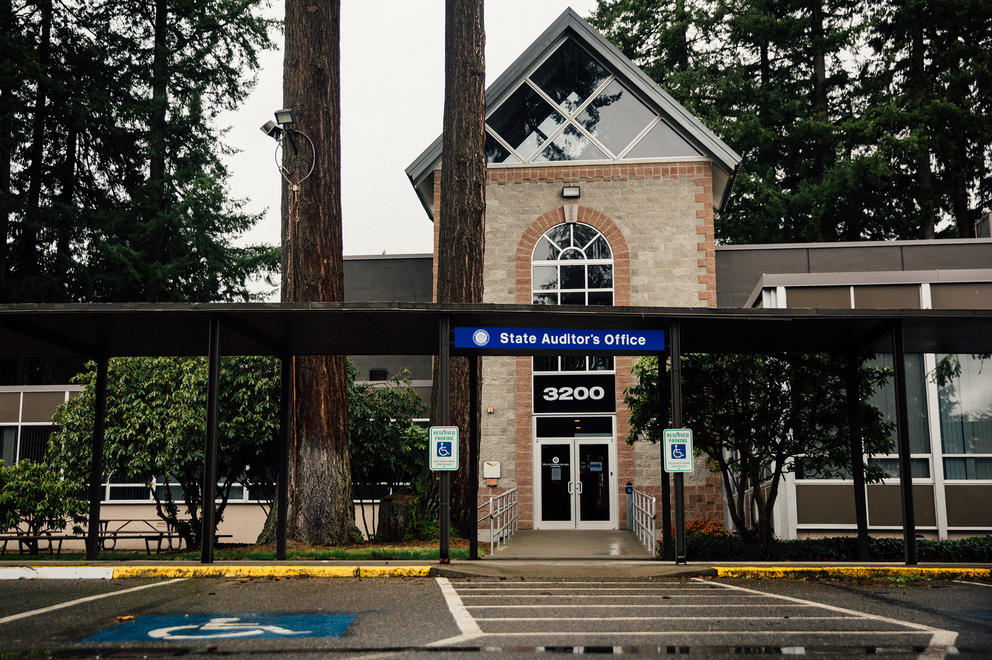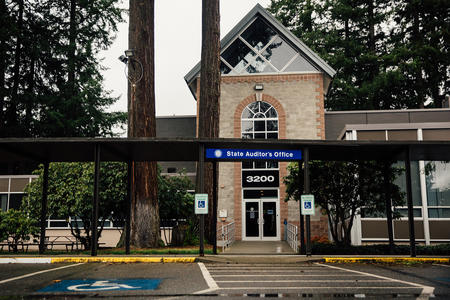The Office of the Washington State Auditor recently outlined 70 “findings” against 14 different state-level agencies over their handling of federal grants or COVID-19 relief money between July 2021 and June 2022. Auditors did not identify any fraud, but concluded some agencies spent money outside of allowed uses or did not comply with federal fraud-prevention policies such as background checks.
Sadie Armijo, director of state audit and special investigations, said many findings resulted from missing or incomplete records of how state agencies spent federal money.
“All of these federal programs, they’re really important,” she said. “You can see that these programs are for the most vulnerable people. ... We’re doing what we can to hold governments accountable.”
Overall, auditors flagged close to $1.2 billion as “questioned” costs.
Questioned costs do not mean money was necessarily misused, but often that agencies could not provide detailed records of how it was spent or whether the spending complied with federal use requirements. Armijo explained that auditors typically test a sample of a program’s spending to extrapolate an estimate of problematic transactions in a program.
Auditors reviewed about $30 billion in federal money passed through Washington state agencies during fiscal year 2022. Armijo said the annual total came down from nearly $37 billion in 2021, but still represented a huge increase over the $18 billion average in pre-pandemic years.
As state agencies awarded money to “subrecipients” such as local governments, social service nonprofits or other contractors, Armijo said, the agencies continued to struggle with monitoring lower-level spending or ensuring money went to approved uses.
“We didn’t see a lot of substantial improvement from the previous year,” she said. “We just found a lot of situations where [agencies] weren’t monitoring them at all or they weren’t turning in what was requested to be turned in.”
This story is a part of Crosscut’s WA Recovery Watch, an investigative project tracking federal dollars in Washington state.
Many agencies acknowledged some shortcomings with federal reporting rules, but argued they had carefully accounted for spending in other ways, updated their reports during the audit process, or relied on previous background checks. Others cited staffing shortages or shifting instructions from federal officials amid the pandemic.
For example, the report questioned $300 million in American Rescue Plan money that the Office of Financial Management allocated to transportation projects at the behest of the Legislature. Auditors reported the allocations did not ensure that spending would comply with federal rules on spending.
OFM officials disputed that finding, contending that OFM had accounted for all the questioned spending under eligible uses in separate transportation project budgets. They pledged to work to track that federal aid separately going forward.
“Unfortunately, the federal granting agencies did not provide clear and adequate guidance when our state agencies received and spent crucial funding that could benefit Washingtonians during that timeframe,” an OFM spokesperson wrote to Crosscut. “And, we found that the guidance often changed as we made decisions.”
Auditors also questioned more than $284 million the state Department of Commerce spent on emergency rental assistance and other pandemic aid. They said Commerce failed to complete the mandatory fiscal reviews on 35 of their 38 subrecipients of rental aid. In a sample of $258 million in aid, auditors found insufficient records on 96% of payments.
Commerce spokesperson Penny Thomas wrote that since quickly standing up the massive rental assistance program during the pandemic, the department has implemented several additional safeguards to document and monitor state spending of federal dollars.
“The number of people served ultimately reached more than 130,000,” she noted. “Our agency was never staffed at a level to complete reviews for every payment, so we instead pursued a plan to continue with our monitoring schedule through fall.”
Auditors flagged another $260 million in questioned costs at the Department of Children, Youth, and Families over how it tracks payments to child care providers. The report said many of those transactions get tracked at a grant level instead of accounting for specific expenditures. DCYF officials stated they had requested additional funding to track expenses in more detail in the future.
“The department is committed to improving our internal controls,” the response stated. “The department does not currently have the staff to develop and maintain the business process redesign, as well as the information technology initiatives necessary to meet the level of assurance as identified by SAO.”
State auditors also issued findings against the Department of Health, the Department of Corrections, the Department of Social and Health Services, the Employment Security Department, the Health Care Authority, and other agencies. Many of those findings involved at least some pandemic-related relief funding.
“They’re still dealing with being understaffed,” Armijo said of state agencies in the wake of the pandemic, “... and I don't know that federal guidance got any clearer in the last year.”
The report noted the state still had $2.89 billion in unspent federal stimulus funds as of the end of the audit period on June 30, 2022.
Find tools and resources in Crosscut’s Follow the Funds guide to track down federal recovery spending in your community.
After state auditors complete their report, they send those findings to the federal agencies that provided the grants for review. Armijo said federal officials may ask state agencies to clarify the documentation on their spending, or in rare cases, they may request repayment of the money.
Armijo also acknowledged the auditor’s office had fallen behind its deadline this year to deliver the audit within nine months of the end of the fiscal year, which ended in June 2022. She said her office coordinated with federal agencies on the delay, and she expected next year’s report to meet the regular timeline.
But the past two years of findings will continue to complicate that process, she said. The office must re-audit past findings as part of its annual follow-up. She noted the state would also see millions in additional federal infrastructure dollars in the coming years.
“We don’t see a reduction in the amount of hours it’s going to take,” she said. “We have to come back every year and re-audit that until the issue is fixed. We’re always coming back.”







